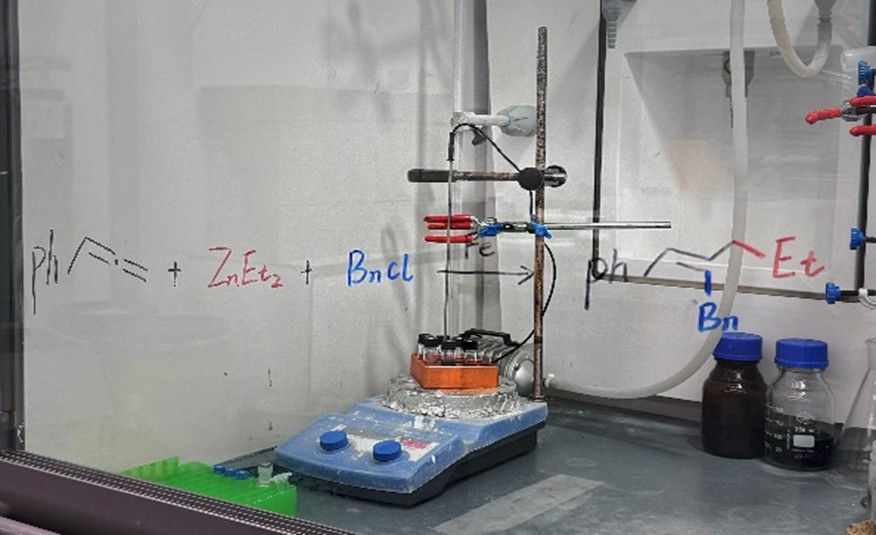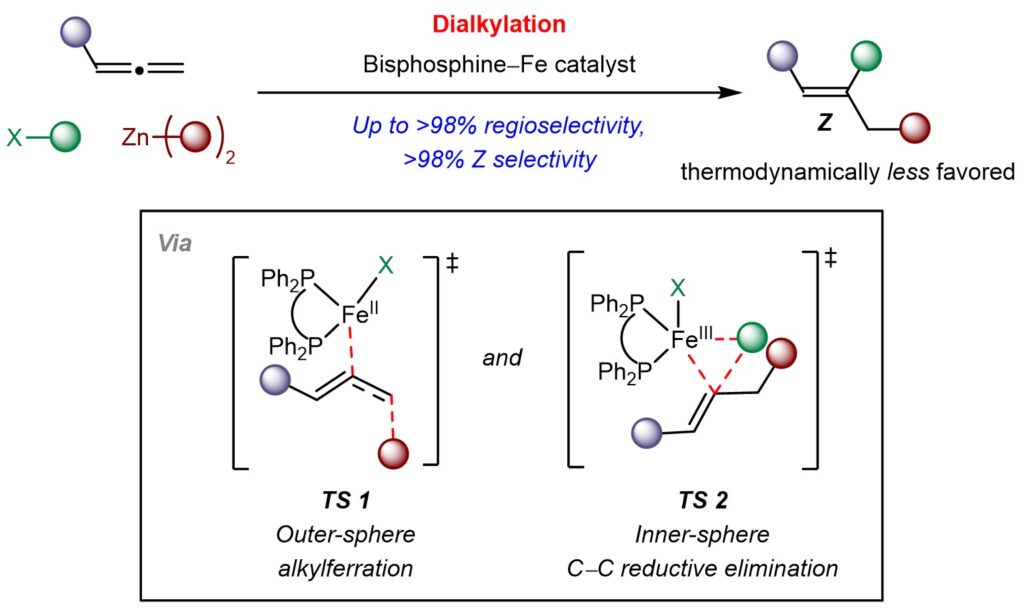
A research team led by Associate Professor KOH Ming Joo, from the Department of Chemistry at NUS has developed a new method that harnesses an affordable and readily available bisphosphine–iron catalyst to merge allenes with other simple chemical building blocks, specifically the sp3-hybridised organohalides and organozinc reagents. This multicomponent strategy allows them to add various aliphatic groups to the allene while controlling both site and Z-selectivity. Furthermore, the use of catalysts derived from iron, a non-toxic, abundant, and inexpensive transition metal, enhances the economic and environmental appeal of this green protocol.
The team also applied their newly developed method to simplify the preparation of a glucosylceramide synthase inhibitor containing a trisubstituted Z-alkene, where the Z-configuration is vital for its bioactivity. This research was carried out in collaboration with Dr Xinglong ZHANG from The Chinese University of Hong Kong and the Institute of High Performance Computing at the Agency for Science, Technology and Research (A∗STAR).
The findings were published in the journal Nature Synthesis.
Prof Koh said, “By providing a straightforward way to access trisubstituted Z-alkenes, our method not only bridges an important gap in the literature, but also enables meaningful investigation of these prized but difficult-to-obtain hydrocarbon compounds in routine experimental studies for applications such as drug discovery.”
“Our studies also suggest a unique mechanism involving outer-sphere radical-mediated alkylferration, followed by inner-sphere carbon-carbon bond formation, offering critical insights for designing kinetically controlled reactions of allenes and other π-systems,” added Prof Koh. Read the full article here.

The schematic illustrates the development of an iron-catalysed dialkylation reaction that selectively transforms allenes into the thermodynamically less favoured Z-isomers of trisubstituted alkenes. The reaction proceeds via transition state TS 1 and TS 2 each involving a different carbon-carbon bond-forming chemical process. This method offers high regio- and Z-selectivity, making it a valuable tool for organic synthesis. [Credit: Nature Synthesis]
